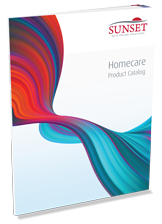We added new retail items to our line to add comfort to CPAP and oxygen therapy.
Aromatherapy
Bring the power of holistic healing to your CPAP therapy with these 16 unique and refreshing aromatherapy scents. The aromatherapy uses calming scents to make your overall CPAP experience more enjoyable.
To use our new aromatherapy kit simply place one drop of aromatherapy into the white diffusion pad. Then either place the diffuser stand directly beneath your machine’s air filter or bend the legs of the diffuser base to make an elevated stand. Natural oils create comforting sensations and help to soothe and relax.
Our starter kit includes the minty fresh Clear scent, made from peppermint, lime and soothing lavender. The starter kit also includes the more calming Peace scent, a relaxing scent made from French lavender, clary sage and marjoram to enhance a restful sleep. All of our aromatherapy products are made with all natural essential oils.
The diffusion pads are completely reusable. We recommend using the same dedicated pad for each type of oil. Scented pads may be stored in the included plastic bags to preserve the scent.
Sunset Order#
CAP5001 – Aromatherapy Starter Kit
CAP5002 – Replacement Aromatherapy Pads
CAP5003 – Replacement Aromatherapy Tray
CAP5004 – 30ml Aromatherapy Refills
CPAP Pillows
Specialty pillows designed for CPAP users to allow comfortable sleep for all mask types in any position. The cut outs on the left and right sides of the pillow allow the user to be comfortable when sleeping with any mask.
The CPAPmax offers 4 pillows in one. One side is memory foam or flip it over for a standard fiber pillow. There’s also a ¾ in. foam layer in the center of the pillow that can be removed to adjust the thickness of the pillow. Additional pillow styles and replacement covers also available.
Sunset Order#
CAP4003 – CPAPmax Pillow
CAP4002 – 5in High Profile Pillow
CAP4001 – 4in Standard Profile Pillow
RoEzIt Moisture Therapy
Petroleum-free lotion with Aloe vera and vitamins A & E. Apply at beginning of treatment and as needed to maintain soft skin and eliminate discomfort from dry/cracking skin. Use to moisturize the nose, lip and over the ear where friction may cause discomfort from the oxygen cannula or CPAP mask. Prevent chafing, irritation, dryness or cracking.
Sunset Order#
CAP6100L – CPAP Moisture Therapy – 1oz Tube
CAP6100S – CPAP Moisture Therapy – 3cc Sample Tube
RES6104L – RoEzIt Dermal Care – 1oz Tube
RES6104S – RoEzIt Dermal Care – 3cc Sample Tube





